If you recently got interested in surfing, just imagining yourself riding and playing with the waves is exciting.
However, it is important to know that not all waves should be surfed – some are for advanced and pro riders, while some should not be ridden at all simply because they’re dangerous and can cause you serious injuries.
Before visiting the beach for your next surf trip, here is the list of wave types that you may encounter.
This article will help you determine if the wave you’re going to come across is surfable, or not.
1. Beach Breaks
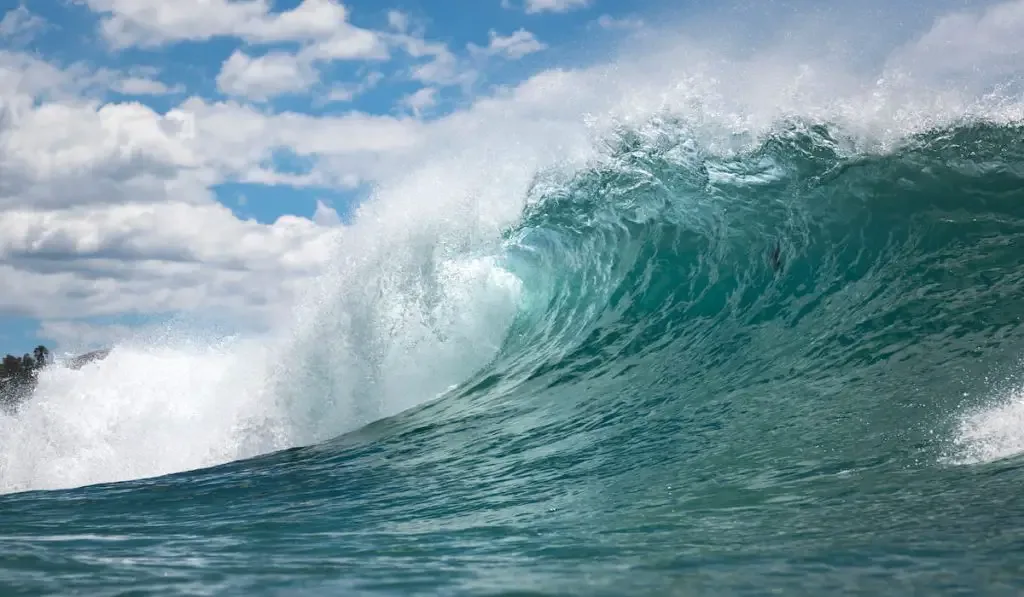
The first on our list is the most common wave for surfers – the beach break.
This wave is produced through a shallow seabed, or sometimes by a jetty or groyne.
The sandbar shifts around the ocean floor through the help of currents, swells, and tides which means that the waves produced can change.
That said, beach breaks can give mellow waves for beginners, as well as strong waves for advanced surfers.
The good thing about beach breaks is that you don’t need to paddle for miles to get out of the wave.
However, this wave does not break as gently as reef waves, or point waves. Meanwhile, getting wiped out by beach breaks is not as harsh as the other wave types.
Some of the most popular beach breaks are Hossegor in Southern France, Nazaré and Supertubos in Portugal, La Gravière in France, Huntington Beach and Trestles Beach in California, and Bells Beach in Victoria, Australia.
2. Collapsing Waves
Collapsing wave is a mix of plunging and surging waves.
It is a type of breaking wave wherein the crest never breaks fully, and yet the bottom face of the wave gets vertical and steeper where it collapses, causing foam or whitewater.
3. Crumbly Waves
This wave is not too steep, fast, or hollow, which means this wave is best suited for beginners who are still learning about the different surfing tricks.
The waves break gently, and are not too strong. It is created when the bottom contours are very gradual. A bonus of this wave is that crumbly waves are present in almost all surfing spots in the world!
4. Double-up Waves
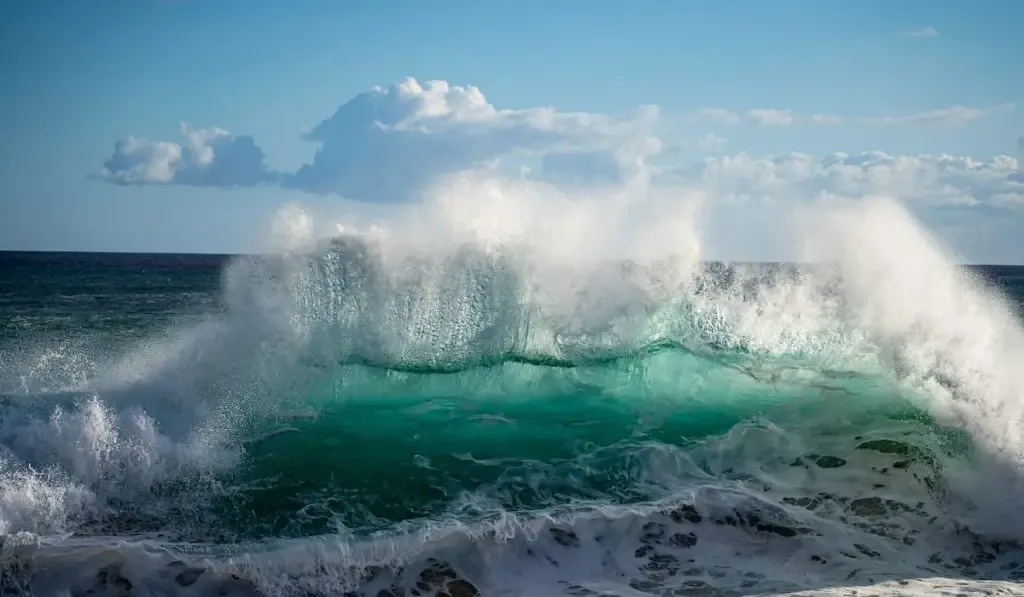
Double-up waves are the result of two waves meeting together.
Their troughs and crests align, and the energy formed between these two waves results in a huge and powerful wave.
The waves formed by this wave type are ultra-hollow and really dangerous; especially when it starts to break.
That said, this wave is best suited for pros and advanced surfers with years of experience. Sometimes, even they can have a hard time overcoming these waves!
5. Plunging Waves
Another type of breaking wave, a plunging wave is created when the incoming swell hits a steep seabed, or has sudden depth changes, like a sandbar or reef.
Because of this, the crest of the waves becomes steeper and vertical, then it curls over and falls on the trough of the waves.
It causes the wave to let out its energy in a violent manner.
The crashing sound can be heard on this wave due to the air under the lip being trapped and compressed.
Plunging waves are most likely to occur in offshore wind conditions.
6. Point Breaks

Point break occurs beside a headland when a wave breaks over a rock, or sand.
Surfers consider point breaks the best time to surf since it can produce a really long wave to ride under the right conditions.
Riding the surfboard on this wave will be the longest as the wave wraps around a point before it flows along the coastline of a bay.
Since the actual riding time is long compared to other waves, surfers can ride this point all at once without injuring each other.
However, it can sometimes be difficult to get into one.
Surfers should also be careful of the surrounding rocks in the area.
Popular point breaks can be found in Jeffreys Bay in South Africa, Noosa in Queensland, Australia, Puerto Escondido in Mexico, and Rincon and Malibu in California.
The point break in Malibu, California provides gentle, mellow waves that are excellent for novice surfers.
7. Reef Breaks
From the name itself, reef breaks occur when a wave breaks over a reef, such as corals or rocky seabeds.
Reef breaks can happen anywhere – somewhere deep, near the shore, or offshore from the shoreline, so long as there are reefs that will break the wave.
While it can offer a longer and more fantastic wave than the beach break, reef breaks are prone to injuries mainly because the cuts you’ll get from corals can be pretty painful, so it is not advisable for beginners.
To find reef breaks, most often you’ll need a boat ride or a long paddle.
Some of the most famous reef breaks can be found in Teahupo’o in Haiti, Uluwati in Bali, and Pipeline in Hawaii.
8. Reform Waves
A reform wave can break and then die down when it hits deeper water before it breaks again, or “reform” that is usually caused by the varying depth of the bottom.
Depending where the reform wave occurs, pro and advanced surfers can enter the wave before it hits deeper waters, which means that the inside reform is left for beginners.
If you are a novice or just starting out, a reform wave is an ideal wave to surf.
9. Rivermouth Waves
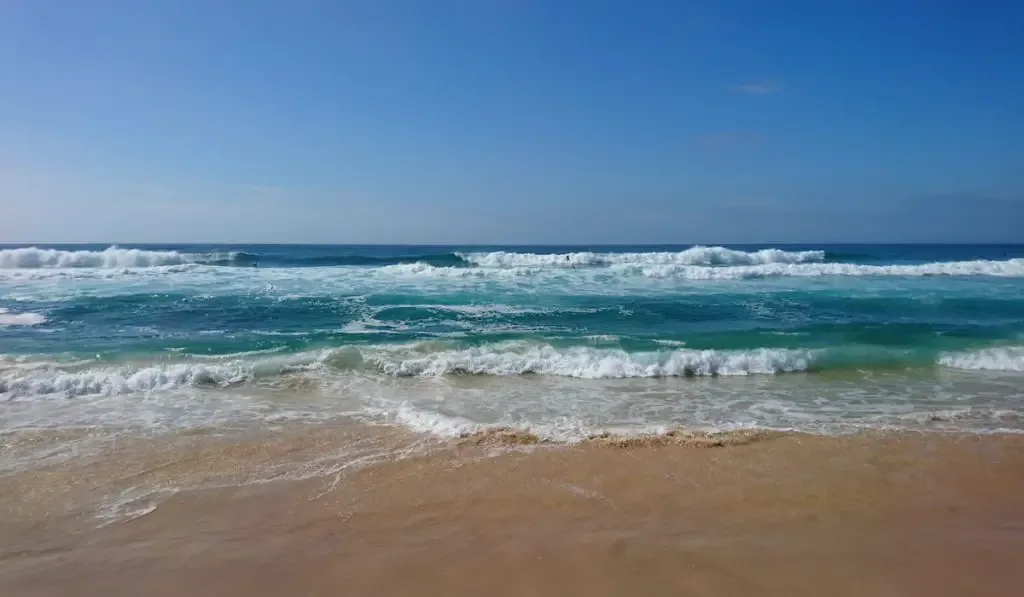
While rivermouth waves are rare, it can be a marvelous experience for surfers.
It occurs when the river throws down sand into well-defined sandbars, in which waves break into an expected and orderly way.
They usually occur near the opening of the river or a creek, the rivermouth wave can break in three ways: left-breaking, right-breaking, or breaking both ways.
The bottom of a rivermouth wave is usually sand, though it can also be rocks, or reefs.
Sometimes called the “Bar” break, this wave can be found in Mundaka in the Basque Country of Northern Spain, and Merimbula bar in Australia.
10. Spilling Waves
A type of breaking wave, the spilling wave occurs in an ocean floor that has a gradual, gentle slope.
As the wave nears the shore, it gradually releases energy, causing whitewater to spill down the face of the wave.
This results in the wave taking more time to break than other wave types. A spilling wave is also called a “mushy wave.”
11. Swell Waves
Swell waves are created through the long-term union of wind-generated waves on the water surface.
The longer the amalgamation, the bigger the swell.
12. Ship Waves
There are instances when large ships create rideable waves for surfers as they move through the water. However, this wave is usually surfed only when it is really small.
13. Tidal Bore Waves
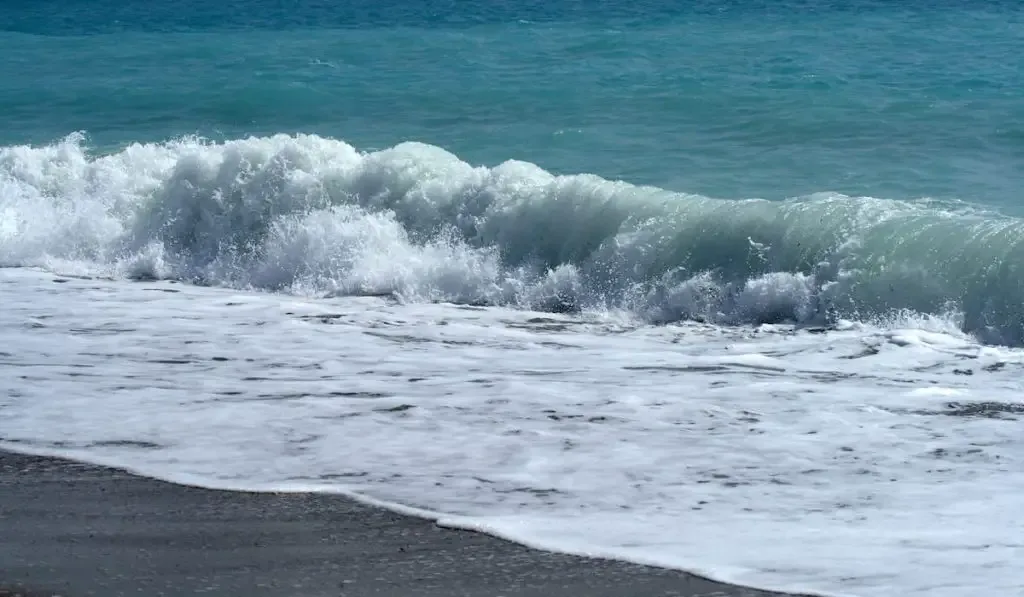
Tidal bore waves are created when strong tidal currents run through a river, or deltaic system.
They thrusts shore wards, forming surfable waves that stretch for many kilometers that can either have single or multiple crest wave fronts.
14. Glacial Calving Waves
Also known as “Glacier Surfing,” this type of wave is formed when a glacier calves, and then a mass of ice will produce 8-meter waves.
Surfers can ride for 300 meters with this wave and it lasts for just one minute. But they will wait for several hours for this event to happen.
15. Wind Waves
Also called the wind-generated wave, this wave occurs when the wind blows on an area of fluid surface, usually on the free surface of bodies of water.
A large one can be surfed when it merges with other swells.
16. Tsunami Waves
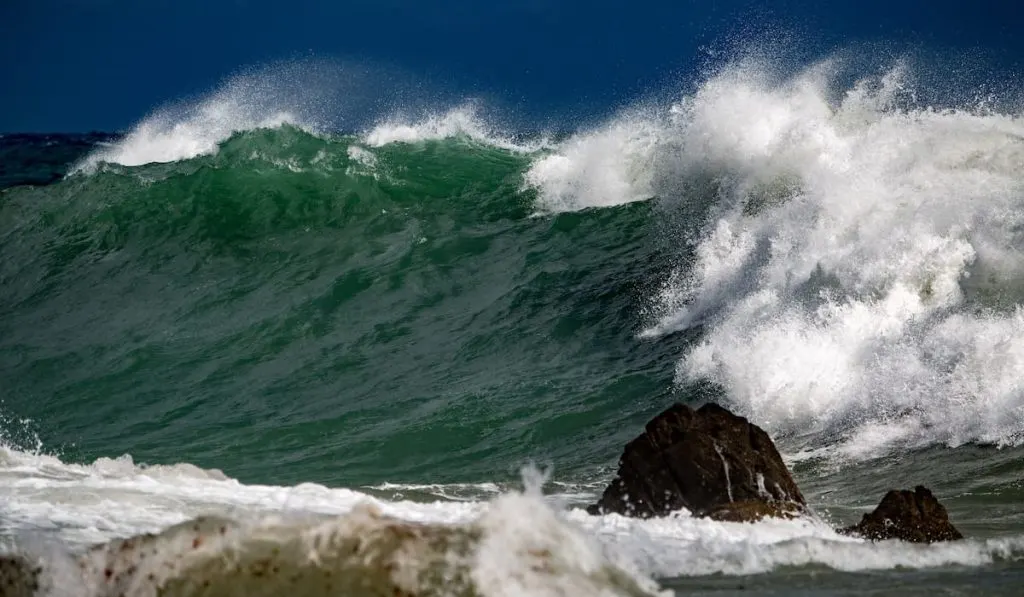
Interestingly, waves formed from tsunamis can be surfed.
There have been documented reports that the tsunami-generated wave was surfed about 1 kilometer before it continued to rise and then crashed into the nearby shoreline at Punta Hermosa, Peru.
However, riders were not aware that the wave came from the tsunami until after the incident.
17. Standing River Waves
Standing river wave occurs when the water flows rapidly on an uneven river or creek bed.
Although not many waves of this type are considered surfable, some instances recorded were from Zambesi river, and near Munich, Germany.
18. Backwash and Sidewash Waves
From the name itself, backwash waves are formed from the backwash of a wave that has previously hit a steep coastline, beach, ocean rockface, or wall.
When the backwash breaks obliquely, or parallel to the angle of the shore, it is now called sidewash.
These types of waves are pretty common, and can also sometimes be formed in concurrence with rips on beaches.
19. Surging Waves
The last type of breaking wave on this list is the surging wave.
This wave type is formed when long period swells with low steepness waves arrive at coastlines with steep beach profiles.
Because of the rapid movement of the wave’s base, the crest does not have the time to evolve.
Because of this, the wave results in a very narrow surf zone, or almost no breaking waves at all, causing whitewater or white foams to be produced.
While this type of wave looks quite safe and friendly, it can be dangerous, or can even cause death due to the backwash associated with it.
20. Artificial Wave Pool Waves

This is an artificial and man-made wave that is usually generated by a device to create small waves.
This type of wave can be surfed on a pool, without the need of an ocean, or shoreline.
Although it is now commercially used, the use of artificial wave pools is still under thorough research and development.
21. Closeouts
This one is on our list not because it is ideal for surfing, but because it should be avoided.
Closeout is a term for waves that break at one time instead of peeling.
This wave creates a lot of whitewater and bubbles without a clean wave face.
Final Thoughts
And that ends our list of waves that every surfer should know.
Be sure to take note of their differences because you might not realize it now, but learning about these waves can save you, or someone’s life.
If you know someone, a family or friend, who is just starting out their surfing journey, this article will surely help so don’t forget to share this with them!
Resources
- https://www.booksurfcamps.com/news/types-of-surfing-waves
- https://www.swimoutlet.com/guides/different-wave-types-for-surfing
- https://www.surfertoday.com/surfing/the-four-types-of-breaking-waves
- https://www.degree33surfboards.com/blogs/gettin-pitted/14071029-the-differences-between-beach-breaks-point-breaks-and-reef-breaks
- https://surfing-waves.com/peeling_waves.htm
- https://www.surfertoday.com/surfing/the-different-types-of-surf-breaks
- https://en.wikipedia.org/wiki/Breaking_wave#Collapsing
- https://www.pacificsurf.com/7-types-of-waves-every-surfer-should-know-about/
- https://en.wikipedia.org/wiki/Surf_break#Types
- https://en.wikipedia.org/wiki/Ice_calving
- https://en.wikipedia.org/wiki/Wind_wave
